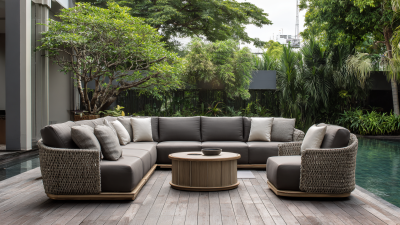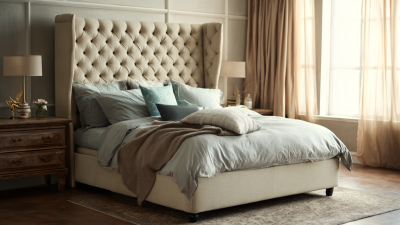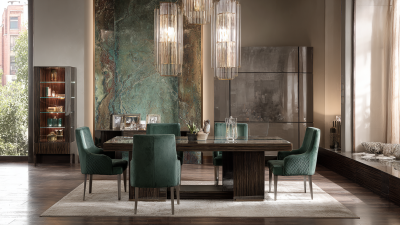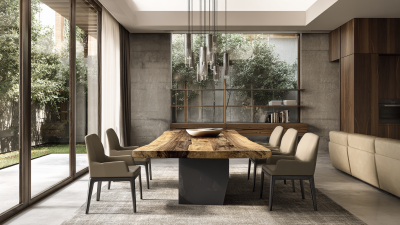Understanding Challenges with Wood Dining Chairs: A Deep Dive into Common Consumer Issues and Industry Trends
The popularity of wood dining chairs has seen a notable resurgence in recent years, with the global wood furniture market projected to surpass $600 billion by 2027, according to a recent industry report. As consumers increasingly seek durability, aesthetics, and sustainability in their choices, wood dining chairs have emerged as a preferred option for many households. However, several challenges accompany this rising trend, including concerns over maintenance, variations in wood quality, and issues related to comfort and design. In this article, we will explore common consumer issues associated with wood dining chairs and analyze industry trends that are shaping the future of wood furniture. Understanding these factors is crucial for both consumers and manufacturers aiming to enhance the dining experience while navigating the complexities of the wood furniture market.

Key Factors Influencing Consumer Choices in Wood Dining Chairs: A Comparative Analysis
When it comes to selecting wood dining chairs, consumers face a multitude of factors that heavily influence their choices. A recent report from the American Home Furnishings Alliance indicates that 62% of consumers prioritize comfort and ergonomics as their top criteria when shopping for dining chairs. This focus on comfort is critical, as long meals with family and friends have become increasingly common, prompting buyers to seek chairs that will provide a pleasant experience over extended periods.
Additionally, aesthetics and design play a significant role in consumer decision-making. According to a 2022 survey by Furniture Today, 58% of participants reported that the style of a dining chair strongly influences their purchasing decision. Mid-century modern designs have seen a 30% increase in popularity, illustrating a shift in consumer preference towards styles that blend both function and fashion.
Furthermore, sustainability is becoming more significant, with 44% of consumers willing to pay a premium for chairs made from eco-friendly materials, highlighting a trend toward responsible consumption in the wood furniture market.
Common Issues Faced by Consumers: Sturdiness, Comfort, and Design Trends in Wood Dining Chairs
When it comes to wood dining chairs, consumers often encounter three primary concerns: sturdiness, comfort, and evolving design trends. According to a 2023 report by the American Furniture Manufacturers Association, 68% of consumers prioritize durability in their selection process, viewing sturdy materials as a key indicator of long-term investment value. Consumers are increasingly frustrated by chairs that do not withstand daily use, pushing manufacturers to focus on quality craftsmanship and robust wood selection, such as hardwoods like oak and maple, which offer superior strength and longevity compared to softwoods.

Comfort is another critical factor, with recent surveys indicating that 62% of buyers would forgo stylish designs for ergonomically sound seating. The rise in awareness of health and well-being is shaping consumer expectations, leading many manufacturers to incorporate supportive features, such as contoured seat designs and higher seat backs. Furthermore, industry data suggests that minimalist and Scandinavian design aesthetics are dominating current trends, appealing to consumers’ desire for both functionality and visual appeal in their dining spaces. This shift not only enhances the dining experience but also influences the overall market direction for wood dining chairs.
Market Trends: Sustainable Sourcing and Its Impact on Wood Dining Chair Manufacturing
In recent years, the wood dining chair market has witnessed significant shifts driven by consumer demand for sustainable sourcing. As environmental awareness grows, manufacturers are increasingly prioritizing eco-friendly materials and practices in their production processes. This trend aligns with the broader dining table market, projected to expand from $8.68 billion in 2025 to $13.71 billion by 2032, demonstrating an annual growth rate of 6.75%. Consumers are not only looking for stylish furniture but also prioritize the environmental impact of their purchases.
Sustainable sourcing not only addresses ecological concerns but also influences industry trends in durability and design. Manufacturers are adopting practices that ensure wood is sourced from responsibly managed forests, which enriches the market with high-quality, sustainable products. This shift can be observed in the rising popularity of outdoor furniture as well, expected to grow from $560 billion in 2025 to $814.4 billion by 2032, with a compound annual growth rate of 5.50%. Emphasizing sustainable materials in both indoor and outdoor settings reflects a collective commitment to creating a greener future, while still catering to the aesthetic and functional preferences of contemporary consumers.
Market Trends: Sustainable Sourcing in Wood Dining Chair Manufacturing
Price Comparisons: Evaluating Cost versus Quality in the Wood Dining Chair Market
When evaluating the wood dining chair market, understanding the balance between cost and quality is crucial. According to a recent report by IBISWorld, the average price of wood dining chairs ranges from $150 to $500, depending not only on the type of wood used but also on craftsmanship and design. High-quality hardwood options like oak and walnut tend to be priced at the upper end, reflecting their durability and aesthetic appeal. Conversely, lower-grade materials can significantly reduce costs but may not offer the longevity consumers expect.
Tip: Always check for certifications like the Forest Stewardship Council (FSC) label, which ensures your wood dining chairs come from sustainably managed forests. This not only contributes to environmental sustainability but often indicates higher quality craftsmanship.
Additionally, as consumer preferences shift towards sustainable and ethically sourced products, many manufacturers are adapting their pricing strategies. A 2022 survey indicated that 63% of consumers are willing to pay up to 20% more for furniture that meets these criteria. This trend could lead to a price hike for eco-friendly options, making it essential for potential buyers to weigh the long-term value against the initial investment.
Tip: When shopping, consider the total cost of ownership, including potential maintenance and repairs. Investing a bit more upfront in durable materials may save money over the chair’s lifetime.

Consumer Preferences: A Data-Driven Look at Style Preferences and Material Finishes in Dining Chairs
When exploring consumer preferences in dining chairs, the significance of style and material finishes cannot be understated. A recent report from the Furniture Today Research indicates that 62% of consumers prioritize aesthetics over functionality when selecting dining chairs. This trend highlights a growing demand for chairs that not only serve their purpose but also enhance the overall dining experience through design elements. Styles such as mid-century modern and industrial are particularly popular, reflecting a shift towards eclectic and personalized dining environments.
Material finishes play a crucial role too, with 45% of surveyed buyers expressing a preference for wood over synthetic materials. This preference is driven by the perception of wood as more durable and timeless. According to the International Furniture and Design Association, wood dining chairs are associated with a longer lifespan and enduring quality, which resonates with environmentally conscious consumers seeking sustainable options. Furthermore, the 2023 Global Trends Report in Furniture indicated that 30% of consumers opt for chairs with customizable finishes, showing the desire for personalization in their dining spaces. These insights shed light on the dynamic landscape in dining chair consumer preferences, emphasizing both style and material as key considerations.
Related Posts
-

Finding Quality Suppliers for the Best Outdoor Sofa in a Competitive Market
-

5 Reasons Why the Best Upholstered Bed Can Transform Your Sleep Quality
-

Unconventional Dining Table and Chairs Alternatives to Elevate Your Space
-

Innovative Kitchen Table Designs That Transform Your Dining Experience
-

What is the Impact of Best Modern Dining Sets on Global Home Furnishing Trends?
-

Advantages of Choosing a Modern Dining Table Set for Your Home